All the solutions provided in McGraw Hill My Math Grade 5 Answer Key PDF Chapter 4 Lesson 2 Divide Using Base-Ten Blocks will give you a clear idea of the concepts.
McGraw-Hill My Math Grade 5 Answer Key Chapter 4 Lesson 2 Divide Using Base-Ten Blocks
Build It
Gary is saving up to buy a trumpet for a band that costs $156. Suppose he saves the same amount each month for 12 months. How much money does he need to save each month?

Find 156 ÷ 12. Use base-ten blocks to find the quotient.
1. Model 156 using base-ten blocks.

2. Since you can not separate the hundreds block into 12 groups, regroup it into tens.

There are _____________ tens total.
3. Divide the tens equally into 12 groups. Circle each group.

How many tens are in each group?
There are still _____________ tens and _____________ ones that need to be divided.
4. Use the remaining tens and ones and regroup them as ones. Then divide the ones equally into 12 groups. Draw the results in the workspace below.

There are _____________ ones
How many ones are in each group? _____________
Each group contains _____________ ten and _____________ ones, or _____________.
So, Gary needs to save _____________ each month.
Check: Use multiplication to check your answer.
_____________ × 12 = $156
Answer: Gary needs to save $12 each month.
Explanation: Given that,
Gary is saving up to buy a trumpet for a band that costs $156.
He saves the same amount each month for 12 months.
Now, we will find how much money is for 15 ten blocks using the Base ten blocks.
Based on the given question steps,
You can not separate the hundreds of blocks into 12 groups, regroup them into tens.
So, there is 15 tens total.
Now, divide tens equally into 12 groups.
One ten in each group. There are still 3 tens and 6 ones that need to be divided.
Use the remaining tens and ones and regroup them as ones. Then divide the ones equally into 12 groups.
There are 36 ones.
In each group, 3 ones will be there.
Each group contains 1 ten and 3 ones, or 13.
So, Gary needs to save $13 each month.
Use multiplication, and check our answer.
i.e., $13 x 12 = $156.
Talk About It
Question 1.
In the activity, you started by placing 1 ten in each group. What will be the place value of the first digit of the quotient?
Answer: Tens place will be the place value of the first digit of the quotient.
Question 2.
What would happen if the cost of the trumpet was $168? Would the amount saved each month increase or decrease?
Answer: The amount saved each month will be increased.
Question 3.
Mathematical PRACTICE Justify Conclusions Suppose Gary chose to save $156 for 13 months instead of 12 months. Will the amount he needs to save per month increase or decrease? Explain your answer.
Answer: The amount he needs to save per month decreased because the base-ten blocks for $156 would now be spread out over 13 months instead of 12 months.
Practice It
Use models to find each quotient. Draw the equal groups.
Question 4.
117 ÷ 13 = _______________
Answer: 9
The quotient value will be divided into equal groups is,
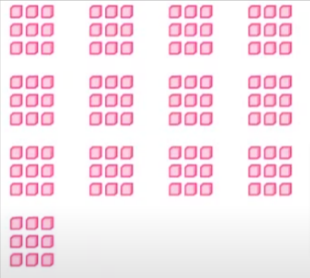
Explanation: Given the values are 117 and 13.
Now, we can draw equal groups using the quotient.
The value 117 is divided by 13, so the quotient is 9.
So, we can draw 9 blocks. For that, we will draw 13 groups.
i.e., 13 x 9 = 117.
Question 5.
136 ÷ 17 = _______________
Answer: 8
The quotient value will be in equal groups is,
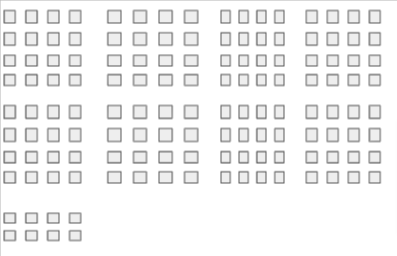
Explanation: Given the values are 136 and 17.
Now, we can draw equal groups using the quotient.
The value 136 is divided by 17, to get the quotient 8.
So, we can draw 8 blocks. For that, we can draw 17 groups.
i.e., 17 x 8 = 136.
Question 6.
231 ÷ 11 = _______________
Answer: 21
The quotient value will be equal groups is,
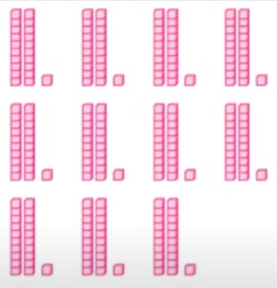
Explanation: Given the values are 231 and 11.
Now, we can draw equal groups using the quotient.
The value 231 is divided by 11, to get the quotient 21.
So, we can draw 21 blocks. For that, we will draw 11 groups.
i.e., 21 x 11 = 231.
Question 7.
105 ÷ 15 = _______________
Answer: 7
The quotient value will be equal groups is,
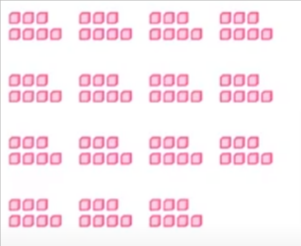
Explanation: Given the values are 105 and 15.
Now, we can draw equal groups using the quotient.
The value 105 is divided by 15, to get the quotient 7.
So, we can draw 7 one blocks. For that, we will draw 15 groups.
i.e., 17 x 8 = 136.
Apply It
Question 8.
The average person eats an average of 26 pounds of bananas each year. How many years would it take a person to eat 104 pounds of bananas? Draw models to find the quotient.
Answer: A person takes 4years to eat 104 pounds of bananas.
Now, we will the quotient value models as,
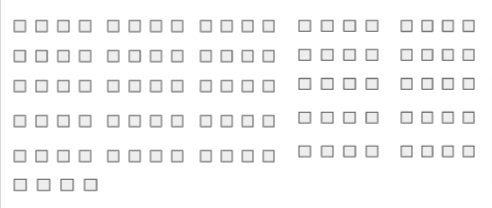
Explanation: Given that,
The average person eats an average of 26 pounds of bananas each year.
Now, we will find out how many years would it take a person to eat 104 pounds of bananas.
So, the value is 104 and 26.
Divide it, to get the value.
i.e., 104/26 = 4
Therefore, A person takes 4years to eat 104 pounds of bananas.
Now, we can draw equal groups using the quotient value.
The value 104 is divided by 26, to get the quotient 4.
So, we can draw 4 one blocks. Like that, we will draw 26 groups.
i.e., 26 x 4 = 106.
Question 9.
A travel van holds 11 people. There are a total of 143 people signed up to take a trip to the zoo. How many vans are needed? Draw models to find the quotient.
Answer: 13 vans are needed.
The quotient value of model blocks is shown below,

Explanation: Given that,
A travel van holds 11 people.
There are a total of 143 people signed up to take a trip to the zoo.
Now, we will find out how many vans are needed.
So, the value is 143 and 11.
Divide it, to get the value.
i.e., 143/11 = 13
Therefore, 13 vans are needed.
Now, we can draw equal groups using the quotient value.
The quotient value is 13.
So, we can draw 13 blocks. Like that, we will draw 11 groups.
i.e., 13 x 11 = 143.
Question 10.
Mathematical PRACTICE Plan Your Solution Cheryl has a collection of sports cards and has 8 pages in the album. Each page of the album holds 14 sports cards. If she completely fills the album, how many total sports cards does she have? Draw models to find the dividend.
Answer: If she completely fills the album, she needs 112 total sports cards.
Now, we will draw models to the dividend value.

Explanation: Given that,
Cheryl has a sports card collection and 8 pages in the album.
Each page of the album holds 14 sports cards.
Now, we will find the total sports cards. If she completely fills the album.
So, the value is 14 and 8.
We will find the dividend value i.e., 14 x 8 = 112.
Therefore, she needs 112 total sports cards to fill the album completely.
Question 11.
Mathematical PRACTICE Use Math Tools The average person eats an average of 16 pounds of apples each year. How many years would it take a person to eat 144 pounds of apples? Draw models to find the quotient.
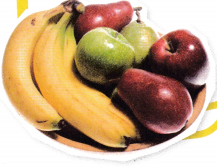
Answer: 9 years would take a person to eat 144 pounds of apples.
Now, draw the models to the quotient value.
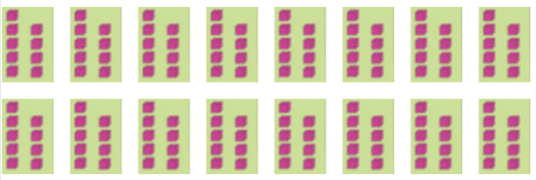
So, 16 groups x 9 blocks= 144.
Explanation: Given that,
The average person eats an average of 16 pounds of apples each year.
Now, we will find out how many years would it take a person to eat 144 pounds of apples.
So, the values are 144 and 16.
Now, divide it.
144/16 = 9
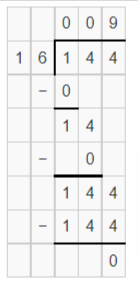
So, the quotient value is 9.
So, 9 years would take a person to eat 144 pounds of apples.
Write About It
Question 12.
How can base-ten blocks be used to divide by a two-digit divisor? Explain.
Answer: It can be used to show that one ten base block is used to break down the number with one value block.
McGraw Hill My Math Grade 5 Chapter 4 Lesson 2 My Homework Answer Key
Practice
Use models to find each quotient. Draw the equal groups.
Question 1.
121 ÷ 11 = _____________
Answer: Using the models, the quotient value is 11.
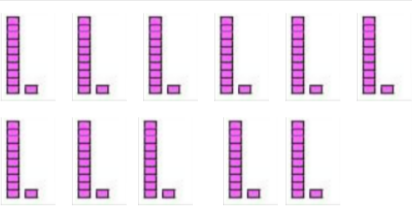
Explanation: Given that, the values are 121 and 11.
Now, divide it. To get the quotient.
So, the value is 121 and 11.
121/11 = 11.
We will draw the model diagram as, 11 one blocks and 11 groups.
i.e., 11 x 11 = 121.
Question 2.
153 ÷ 17 = _____________
Answer: Using the models, the quotient value is 9.
Now, we will model, 9 one blocks and 17 groups.

Explanation: Given that, the values are 153 and 17.
Now, divide it. To get the quotient.
So, the value is 153 and 17.
153/17 = 9.
We will draw the model diagram as, 9 one blocks and 17 groups.
i.e., 17 x 9 = 153.
Problem Solving
Question 3.
Braydon bought 13 packages of golf balls for $273. Each package costs the same amount. How much does one package cost? Draw models to find the quotient.
Answer: One package cost is $21.
Now, draw the models for the quotient value.
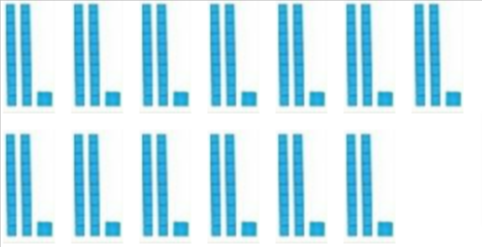
The model diagram consists of 21 blocks and 13 groups.
It means 21 x 13 = 273.
Explanation: Given that, the values are 273 and 13.
Now, divide it. To get the quotient.
So, the value is 273 and 13.
273/13 = 21.
We will draw the model diagram as, 21 one blocks and 13 groups.
i.e., 21 x 13 = 273.
Question 4.
Desiree wrote an essay for school that had a total of 247 words and was 13 lines long. If each line had an equal number of words, how many words were on each line? Draw models to find the quotient.
Answer: If each line had an equal number of words, 19 words were on each line.
Now, we will draw the models of quotient value.

So, based on diagram 13 x 19 = 247.
Explanation: Given that,
Desiree wrote an essay for school that had a total of 247 words and was 13 lines long.
If each line had an equal number of words.
Now, we will find out how many words were on each line.
So, the values are 247 and 13.
Now, divide it. We will get the quotient value.
247/13 = 19
Now, we can draw 19 blocks and 13 groups.
i.e., 19 x 13 = 247.
Question 5.
Mathematical PRACTICE Use Math Tools There were 242 fish in 22 fish tanks at the pet store. If there were an equal number of fish in each fish tank, how many fish were in each tank? Draw models to find the quotient.
Answer: 22 fish were in each tank.
Now, we will draw the models to the quotient.

Now, to check it.
11 x 22 = 242.
Explanation: Given that,
There were 242 fish in 22 fish tanks at the pet store.
If there were an equal number of fish in each fish tank,
Now, we will find out how many fish were in each tank and draw the models.
So, the values are 242 and 22.
Now, divide it. We will get the quotient value.
242/22 = 11
Now, we can draw 11 blocks and 22 groups.
i.e., 11 x 22 = 242.